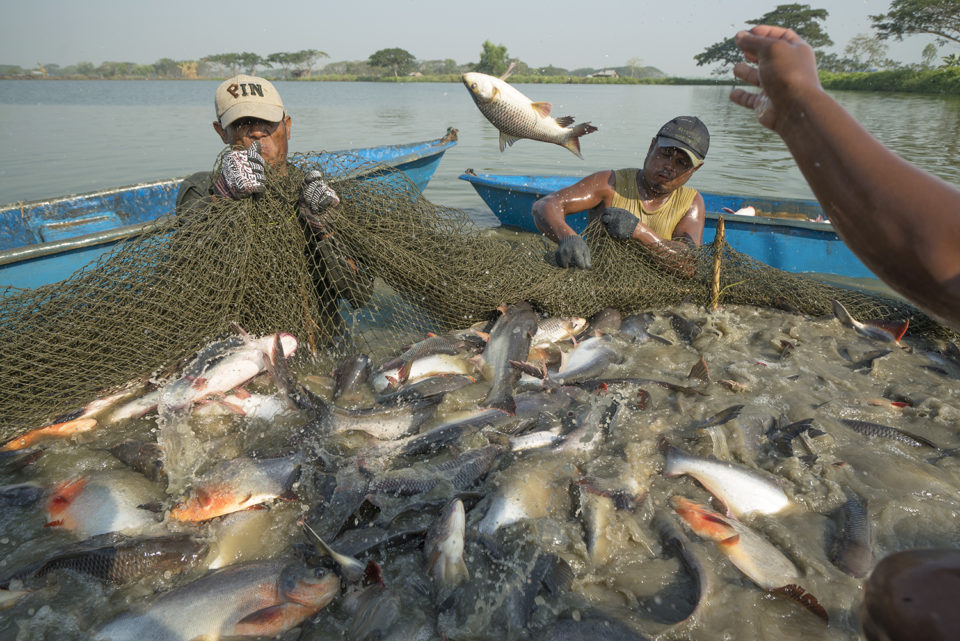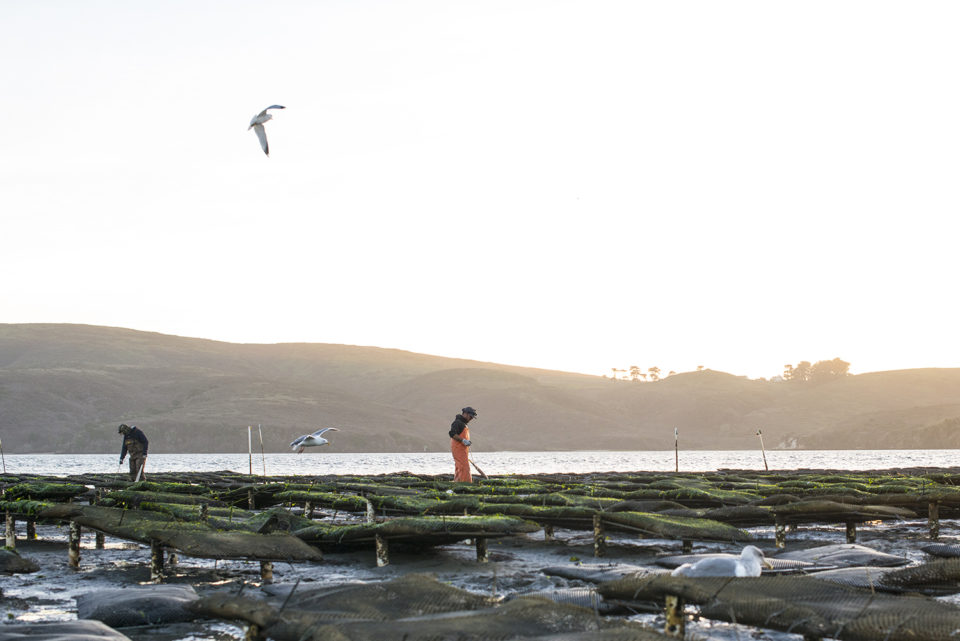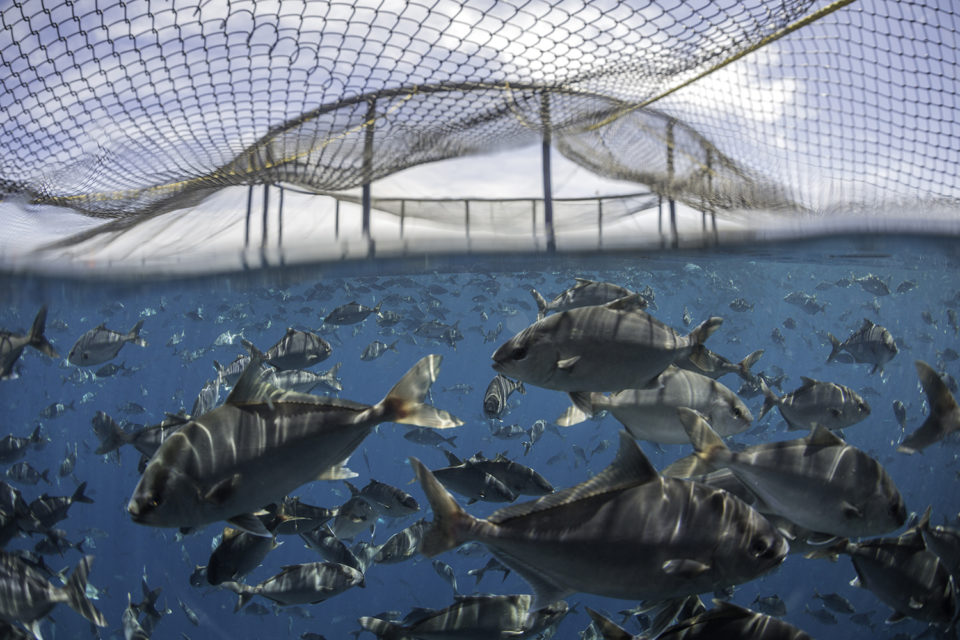Authors encourage investors to look to places with enabling conditions for growth

If the Blue Revolution is to take hold, it must be funded.
Aiming to spur meaningful investment in a global aquaculture industry guided by strong environmental protections, U.S. non-governmental organization The Nature Conservancy (TNC) last week issued a field guide for all parties interested in accelerating the sector’s sustainable future.
Titled “Toward a Blue Revolution: Catalyzing Private Investment in Sustainable Aquaculture Systems,” the free, 162-page report was co-written by New York-based impact investment firm Encourage Capital. According to Robert Jones, global aquaculture lead at TNC, the need for this comprehensive resource is big and growing.
“We know there are some industry analyst reports, and some good ones, out there. But they’re not often open-sourced. We wanted to make this information readily available and bring these opportunities to the mainstream,” Jones told the Advocate. “It’s a bigger-than-aquaculture story; it’s about feeding the planet responsibly. Our organizational mandate is now to find solutions to feed 9.7 billion people by the year 2050, sustainably. What this report is about is the most compelling solution to achieving that, through aquaculture.”
Mitigating the environmental impacts of aquaculture – an industry that the Food and Agriculture Organization of the United Nations (FAO) estimates is worth $243.5 billion and growing at a 6 percent annual pace – will depend on innovative technology advances and thoughtful farm siting, the report states. Impacts to wild fish stocks, water pollution, habitat degradation and disease are areas in which aquaculture can improve with large-scale private and multilateral investment, it added.
TNC and Encourage Capital identified three forms of aquaculture production that have environmental performance scores exceeding those of traditional, “business as usual” operations like near-shore net pens: seaweed and bivalve culture, offshore aquaculture and recirculating aquaculture systems (RAS). The authors of the report hope that these systems become the primary methods of producing seafood by 2050.

While taking a big-picture view, the report is also geared to smaller operations seeking to grow and for policymakers.
“We talk about recommendations for entrepreneurs themselves, those starting their own businesses, about how to appeal to investors,” said Jones. “Investors are traditionally hesitant to finance some of the more innovative production systems that have great potential like RAS and offshore. We outlined three reasons why.”
The first reason, he said, is knowledge. The report contends that there’s a lack of fundamental information on aquaculture designed for non-experts. “We aim to synthesize what’s available and what we know about this space,” said Jones.
It’s a bigger-than-aquaculture story; it’s about feeding the planet responsibly.
The second, Jones explained, is a lack of consensus among investors as to whether aquaculture qualifies as an “impact” investment – one that brings triple-bottom-line (economic, environmental and social) returns. The report aims to clarify the guidance around that, said Jones.
Thirdly, there’s a perception that perceived risk is higher than actual risk, he said. “We aim to explain why these systems are becoming profitable and ways to mitigate risk,” he added.
Jones, who joined TNC in 2016, has led the group’s efforts to support aquaculture production systems that provide crucial ecosystem services – like seaweed and oysters, which clean the water and absorb carbon. Promoting production methods like RAS and offshore aquaculture – in which net pens are moved from near-shore state waters to federal waters more than 3 miles offshore – represents a bolder step. Jones recognizes that moving farms from sensitive areas onto land or further from shore where environmental impact is lessened also makes sense from an economic standpoint, as there are relatively few players.

The most important investment strategy for aquaculture that the report details regards identifying the proper “enabling conditions” that allow development: defining, aligning and refining government policies; supporting sustainable innovation and pipeline cultivation; and establishing a set of commonly accepted principles for responsible marine aquaculture investment and industry benchmarking tools.
“You need the proper regulatory structure in place in order to start,” said Jones. “You need a permit, but it’s in the interests of the business that the regulatory structure ensures environmental protection and protection of the business.”
Regardless of configuration or mandate, any investor – impact, philanthropy, private equity or venture capital – requires patience to truly find success in aquaculture investment, Jones agreed: “We’re not saying it’s going to be easy. But there are compelling opportunities out there. It’s important that the risk matches the return.”
“Toward a Blue Revolution” argues that if early movers in RAS, offshore and non-fed aquaculture species ventures find success, the barriers to entry will be lowered for the more skeptical investors. With all of the new RAS projects coming online in the United States, particularly in Maine where two land-based salmon farms and one yellowtail farm are in development stages, Jones said it’s a “critical time” for the technology, which he still characterized as “high risk.”
“It’s an extremely complex interdisciplinary field. That’s evidenced by the diversity of backgrounds on the team that wrote this thing,” said Jones. “By no means will it replace the due dill an investor must do to be financially successful and environmentally responsible. But it’s a start.”
Follow the Advocate on Twitter @GAA_Advocate
Now that you've finished reading the article ...
… we hope you’ll consider supporting our mission to document the evolution of the global aquaculture industry and share our vast network of contributors’ expansive knowledge every week.
By becoming a Global Seafood Alliance member, you’re ensuring that all of the pre-competitive work we do through member benefits, resources and events can continue. Individual membership costs just $50 a year. GSA individual and corporate members receive complimentary access to a series of GOAL virtual events beginning in April. Join now.
Not a GSA member? Join us.
Author
-

James Wright
Editorial Manager
Global Aquaculture Alliance[103,114,111,46,101,99,110,97,105,108,108,97,101,114,117,116,108,117,99,97,117,113,97,64,116,104,103,105,114,119,46,115,101,109,97,106]
Tagged With
Related Posts

Innovation & Investment
Aquaculture is winning, Rabobank analyst explains
Aquaculture is the “winning protein,” according to a new Rabobank report that its author, Gorjan Nikolik, said is intended to draw the bank’s agro-industry clients to opportunities in the fish farming business.

Innovation & Investment
Aquaculture Exchange: Mike Velings, Aqua-Spark
Dutch investment firm Aqua-Spark has in just two years developed a modest portfolio, but a strategy that is poised for growth and impact across the entire aquaculture value chain, its CEO and co-founder told the Advocate.

Innovation & Investment
At seafood investor forum, a ‘blue-sky’ outlook and a search for the next salmon
At the IntraFish Seafood Investor Forum in New York, “all roads lead to salmon.” Buoyed by high prices and soaring demand, the sector is an example worth following. But it’s not without its challenges.

Innovation & Investment
Aquaculture innovators come out of their shells at Fish 2.0
Biannual conference/competition showcased 40 new seafood businesses, or related services, from around the world. Winners were chosen on the strength of the opportunity, meaningful impact and compelling leadership and presentation.

